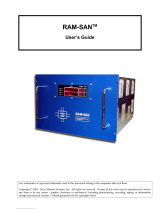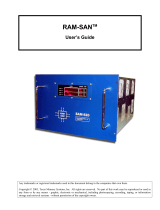
FCC rating label..............................................................................................................110
Class A equipment......................................................................................................110
Class B equipment......................................................................................................110
Declaration of Conformity for products marked with the FCC logo, United States only...............111
Modification...................................................................................................................111
Cables...........................................................................................................................111
Canadian notice (Avis Canadien)...........................................................................................111
Class A equipment...........................................................................................................111
Class B equipment...........................................................................................................111
European Union notice..........................................................................................................111
Japanese notices..................................................................................................................112
Japanese VCCI-A notice....................................................................................................112
Japanese VCCI-B notice....................................................................................................112
Japanese VCCI marking...................................................................................................112
Japanese power cord statement.........................................................................................112
Korean notices.....................................................................................................................112
Class A equipment...........................................................................................................112
Class B equipment...........................................................................................................113
Taiwanese notices.................................................................................................................113
BSMI Class A notice.........................................................................................................113
Taiwan battery recycle statement........................................................................................113
Turkish recycling notice..........................................................................................................113
Vietnamese Information Technology and Communications compliance marking.............................113
Laser compliance notices.......................................................................................................114
English laser notice..........................................................................................................114
Dutch laser notice............................................................................................................114
French laser notice...........................................................................................................114
German laser notice.........................................................................................................115
Italian laser notice............................................................................................................115
Japanese laser notice.......................................................................................................115
Spanish laser notice.........................................................................................................116
Recycling notices..................................................................................................................116
English recycling notice....................................................................................................116
Bulgarian recycling notice.................................................................................................116
Czech recycling notice......................................................................................................116
Danish recycling notice.....................................................................................................116
Dutch recycling notice.......................................................................................................117
Estonian recycling notice...................................................................................................117
Finnish recycling notice.....................................................................................................117
French recycling notice.....................................................................................................117
German recycling notice...................................................................................................117
Greek recycling notice......................................................................................................117
Hungarian recycling notice...............................................................................................118
Italian recycling notice......................................................................................................118
Latvian recycling notice.....................................................................................................118
Lithuanian recycling notice................................................................................................118
Polish recycling notice.......................................................................................................118
Portuguese recycling notice...............................................................................................119
Romanian recycling notice................................................................................................119
Slovak recycling notice.....................................................................................................119
Spanish recycling notice...................................................................................................119
Swedish recycling notice...................................................................................................119
Battery replacement notices...................................................................................................120
Dutch battery notice.........................................................................................................120
French battery notice........................................................................................................120
Contents 7





















